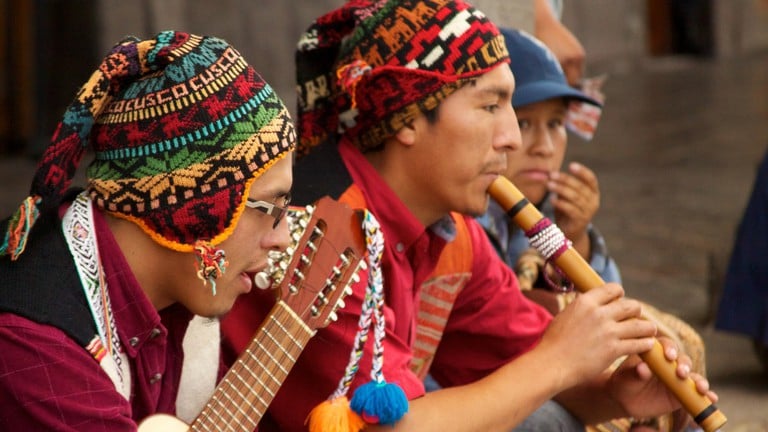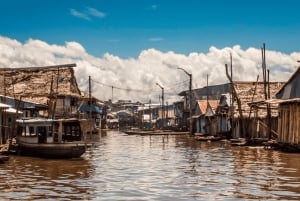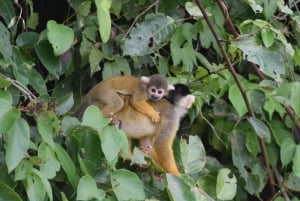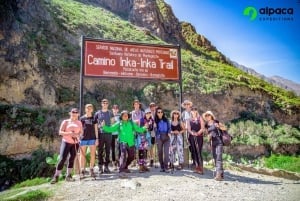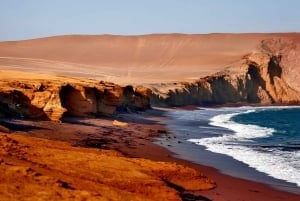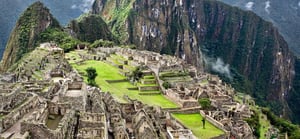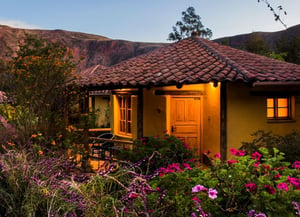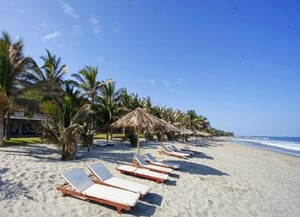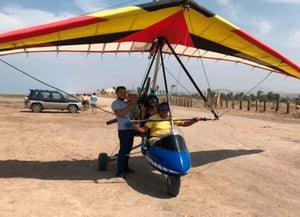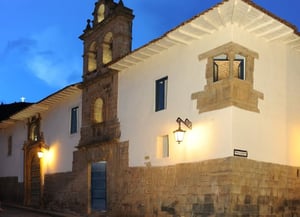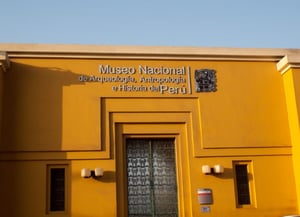Peruvian music
Latin America's oldest musical traditions are those of the Amerindians of the Andes. Their music is best known outside these countries through the characteristic panpipes of poncho-clad folklore groups. However, there's a multitude of rhythms and popular musics found here deserve a lot more recognition, incuding huayno and chicha, still relatively unknown abroad, as well as the distinct coastal tradition of Afro-Peruvian music, rooted in black slaves brought to work in the mines.
For most people outside Latin America the sound of the Andes is that of bamboo panpipes and quena flutes. What is most remarkable is that these instruments have been used to create music in various parts of this large area of mountains - which stretch 4500 miles from Venezula down to southernmost Chile - since before the time of the Incas. Pre-Conquest Andean instruments - conch shell trumpets, shakers which used nuts for rattles, ocarinas, wind instruments and drums - are ever present in museum collections. And the influence of the Inca empire means that the Andean region and its music spreads far beyond the mountains themselves. It can be defined partly through ethnicity, partly through language - Quechna (currently spoken by over six million people) and Aymara , both of which are spoken alongside Spanish and other Amerindian languages.
The dominant areas of Andean culture are Peru , Ecuador and Bolivia, the countries with the largest indigenous Amerindian populations in South America. Here, in rural areas, highly traditional Andean music, probably little different from pre-Inca times, still thrives today at every kind of celebration and ritual. But beyond this is a huge diversity of music, differing widely not only between countries but between individual communities. Andean people tend to identify themselves by the specific place they come from: in music, the villages have different ways of making and tuning instruments and composing tunes, in the same way as they have distinctive weaving designs, ways of dressing or wearing their hats. Use of different scales involving four, five, six and seven notes and different singing styles are also found from place to place, tied to specific ritual occasions and the music which goes with them.
Andean music can be divided roughly into three types. Firstly, that which is of indigenous origin , found mostly amongst rural Amerindian peoples still living very much by the seasons with root Amerindian beliefs; secondly music of European origin , and thirdly mestizo music , which continues to fuse the indigenous with European in a whole host of ways. In general, Quechna people have more vocal music than the Aymara.


